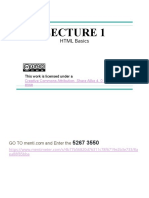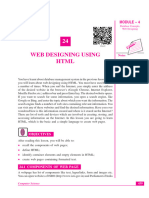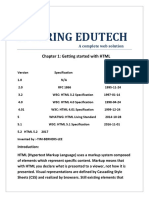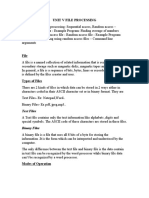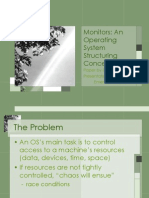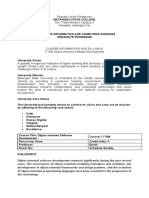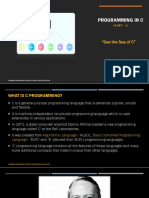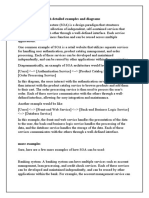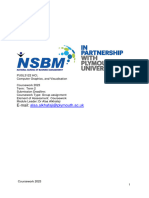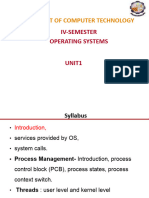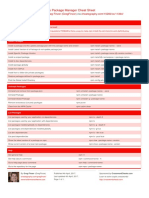0% found this document useful (0 votes)
12 views18 pages2 WEB & HTML Basics
The document provides an overview of web development, including the basics of HTML and the structure of web pages. It covers setting up a development environment, creating a simple web page, and understanding HTML elements, tags, and attributes. The learning outcomes include the ability to set up a development environment, create a web page, and apply basic HTML formatting.
Uploaded by
yahyakhan.superiorpeshawarCopyright
© © All Rights Reserved
We take content rights seriously. If you suspect this is your content, claim it here.
Available Formats
Download as PPTX, PDF, TXT or read online on Scribd
0% found this document useful (0 votes)
12 views18 pages2 WEB & HTML Basics
The document provides an overview of web development, including the basics of HTML and the structure of web pages. It covers setting up a development environment, creating a simple web page, and understanding HTML elements, tags, and attributes. The learning outcomes include the ability to set up a development environment, create a web page, and apply basic HTML formatting.
Uploaded by
yahyakhan.superiorpeshawarCopyright
© © All Rights Reserved
We take content rights seriously. If you suspect this is your content, claim it here.
Available Formats
Download as PPTX, PDF, TXT or read online on Scribd
/ 18

















